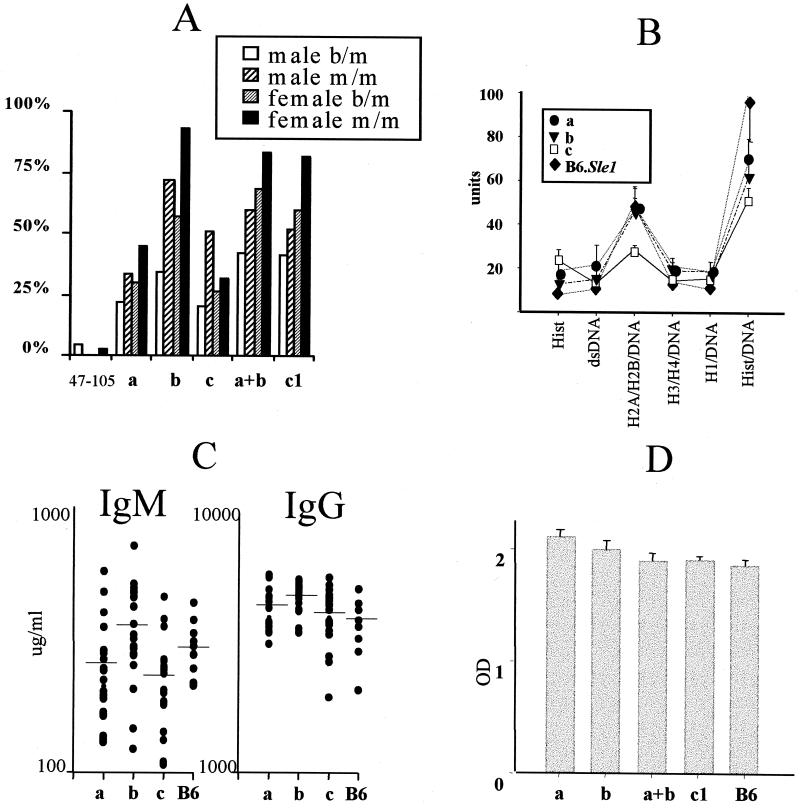Figure 2.
Serological characteristics of the three Sle1 loci. (A) Penetrance of anti-chromatin IgG Ab production in heterozygous (b/m) and homozygous (m/m) congenic recombinants. Heterozygous congenic intervals have been distributed into three nonoverlapping clusters defining the three loci, a, b, and c, as shown on Fig. 1. () groups intervals centromeric to D1Mit105, which do not contain Sle1a, Sle1b, or Sle1c. Within each heterozygous group, a number of overlapping intervals are represented, each of them in multiple mice. Number of mice for each group: (), 62; Sle1a, 54; Sle1b, 18; Sle1c, 65; Sle1a + b, 122; B6.Sle1het, 15. For homozygous mice, each locus is represented by a specific interval (Table 1): B6.Sle1(47–105), 70 mice; B6.Sle1(15–353), 39; B6.Sle1(113–274), 32; B6.Sle1(274–17), 26; B6.Sle1(400–206), 42; B6.Sle1, 60. (B) Subnucleosomal specificities of IgG Ab. Mean +SE on 12 sera for each substrain tested simultaneously for the six chromatin antigens by ELISA as described in ref. 13. (C) Total serum IgM and IgG levels compared with B6 controls. Horizontal lines indicate mean values for each group. (D) IgG response to OVA immunization 6 weeks postimmunization. Mean +SE on five mice for each substrain immunized simultaneously.

